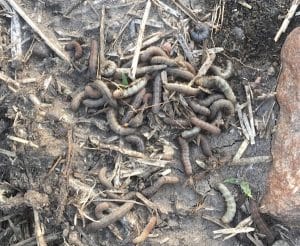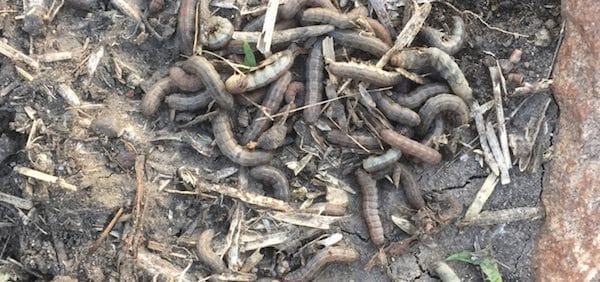Two CCC agronomy specialists heard this week of high cutworm damage in canola fields seeded into canola stubble. Canola on canola has many potential yield risks and we can add heavy cutworm feeding to that list.
In general, fields that had flowering plants (crops or weed patches) in August or September of the previous year may have higher cutworm counts. These flowers attract the adult moths, which lay their eggs in these areas. Moths also tend to prefer loose soil with less surface residue for egg laying. Pulses and canola tend to have less surface residue.

We have not officially identified the species in the both fields, but the photo above shows a selection of cutworms scouted in one of them.
Having not seen the field or the cutworms, AAFC cutworm specialist Kevin Floate provided this note:
“Redbacked cutworm females preferentially lay eggs in autumn in uncultivated fields with broadleaf perennial and winter annual weeds. A canola on canola rotation with good snow cover to protect overwintering eggs might provide an explanation. A dry spring would reduce mortality due to pathogens (fungi, viruses).”
The key from a management perspective is to keep an eye out for cutworms in all canola fields, and take an extra close look in canola fields seeded into canola stubble.
Further reading:
Kevin Floate’s “Cutworm pests of crops on the Canadian Prairies: identification and management guide” from Agriculture and Agri-Food Canada
Cutworm management tips
Blackleg, foot rot or cutworms?
